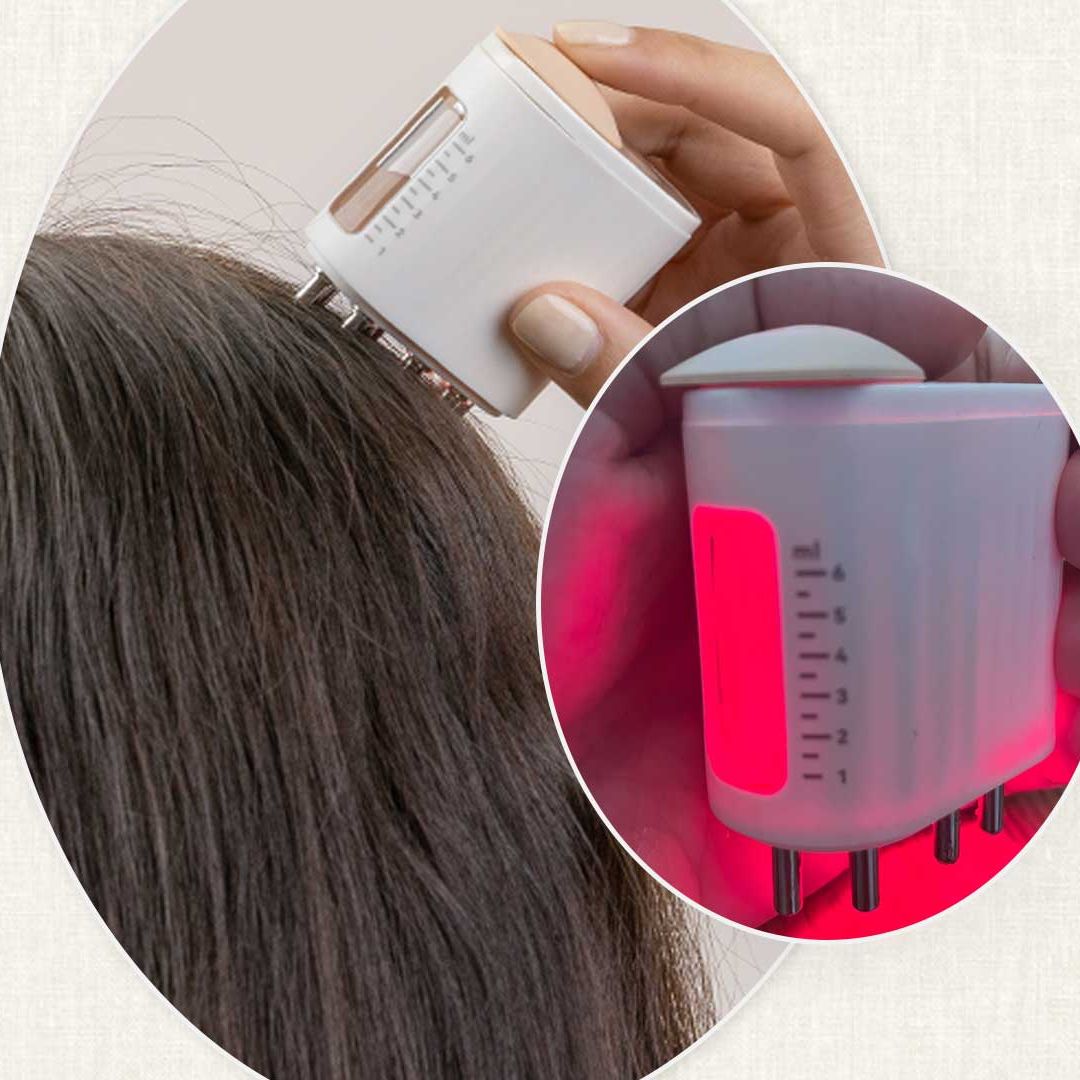Female hair loss, also know as alopecia, can be triggered by a multitude of things. As a result, not only might it take time to pluck up the courage to discuss the issue, but it may take even longer to get specialised medical advice and an accurate diagnosis.
We spoke with leading professionals in the aesthetics industry to see what treatments are available to address hair loss.
Aesthetic treatments for hair loss
Firstly, what exactly is hair loss?
Renowned plastic surgeon and vice president of the British Association of Hair Restoration Surgery, Dr Greg Williams explains that “alopecia is the medical term for excessive or abnormal hair loss but there are many kinds of alopecia. The cause may be as simple as having a hereditary susceptibility that makes men and women more likely to develop patterned hair loss, or it may be due to a medical or dermatological condition.
“However, it could be more complex as there are a whole host of nutritional and immunological reasons why hair starts to fall out or stops growing. A professional diagnosis is always the most important first step to establish the potential cause and gain understanding about possible treatment options.”
What are the common types of hair loss in women?
1. Female pattern hair loss
“Whilst female pattern hair loss (FPHL) is often medically referred to as androgenetic alopecia, most case are not due to an excess of male hormones. FPHL is a genetically determined, patterned, progressive form of scalp hair loss and is a common type of alopecia in women.
“However, the exact role of male and female hormones in FPHL is poorly understood. The hairline tends to be retained and the hair loss is most obvious in the central frontal area, often with a widening of a central part.
“The hair shafts produced by the affected follicles in FPHL become progressively smaller in diameter, shorter in length and lighter in colour until eventually they may disappear completely,” Dr Williams explains.
2. Traction alopecia
“Traction alopecia can affect anyone wearing tight hairstyles for long periods of time. The hair loss is the result of repeated and prolonged pulling of the hair.”
How can you treat hair loss?
1. Do your research before seeing a hair loss specialist
“Whilst some general practitioners are very knowledgeable about hair loss, many are not. A trichologist is a non-doctor who has an interest in the scientific study of the hair and scalp, but the word ‘trichologist’ is not protected, and does not require an accredited qualification.
“Even dermatologists might not have specialist training in hair loss, so it is really important to make sure that you check the qualifications and experience of whoever you see for advice,” explains Dr Williams.
Topical treatments for hair loss
You may be prescribed topical treatments such as minoxidil, which may help spark new hair growth, however be sure to always consult a doctor before taking any new products or medication.
Trichologist Stephanie Sey states that “minoxidil increases blood flow to the scalp and stimulates hair follicles, promoting regrowth, after four to six months of use.” However, Stephanie says to be prepared for some extra shedding at month three.
Cosmetic tattooing for hair loss
For instant results and minimal downtime, scalp micropigmentation (SMP) is a popular option, and is a tattooing treatment that replicates the look of stubble or hair follicles.
Aesthetic Practitioner Hannah Longley at Ink&Glow explains that “scalp micropigmentation is suitable for both men and women. For women, if the hair is thinning all over, perhaps as a result of the menopause, then scalp micropigmentation can be used to defuse the areas where the scalp is more visible – this adds the effect of density and camouflages the hair thinning.
“Unlike regular tattooing, most clients report feeling very little throughout treatment and the results last around four to five years.”
Micrografting for hair growth
“It is easier to hang on to your hair than replace it once it's gone,” Ouronyx Doctor Dr Marco Nicoloso, who carries out a treatment called micrografting, explains.
“A trichoscopy exam to understand where the patient is in terms of alopecia is undertaken prior - and again later, post the hair regeneration treatment, to track progress.
“To maintain the hairs’ health, you must check for any vitamin deficiencies or hormone imbalances. The results of this scan will show us any problems in the hair and what treatment can support.
“The skin on our scalp is rich in growth factors and progenitor cells – all of which act as a repair system for the body. Micrografting uses our own skin tissue to help slow down hair loss and stimulate existing follicles to grow longer and thicker.
“Tiny skin grafts are taken from the hair line area and placed in a special device to extract the progenitor cells and growth factors before the mixture is injected back into the scalp where hair is thinning or we have naturally fine, sparse strands.
“It is important to understand that micrografting won’t create new hair on your scalp. But it will encourage existing follicles to grow, so sparse areas on the scalp will become thicker and fuller.”
Hair transplants to treat hair loss
If a surgical route is advised by a reputable trichologist/dermatologist, then hair transplant surgery consideration requires in-depth consultation and planning.
The principal of hair transplant surgery is to relocate hairs from the back and/or sides of the scalp to areas where there is permanent hair loss. The donor hairs have properties which make them resistant to hair loss, thus providing a potential lifelong hair restoration solution.
Mr D’Souza MBBS MSc, MRCS hair transplant surgeon at The D’Souza Clinic, explains the two main donor hair harvesting options available.
“Strip FUT or strip follicular unit transplantation involves taking a thin strip of skin with intact hair follicles from the ‘safe’ or ‘permanent’ zone at the back and sides of the head.
“After the strip is dissected into individual follicular units, grafts are then placed into tiny incisions in the recipient zone where there is hair loss in a way to give you the most natural results.
“The main advantage of Strip FUT is that larger graft numbers can often be achieved, and the back of the head does not need to be shaved.”
“The disadvantage is that a linear scar is left where the strip is taken, which may limit very short hair length. Strip FUT is also considered to be a more invasive procedure and can be associated with more post-operative discomfort.”
“FUE or follicular unit excision involves extracting follicles with small punches where follicular units are extracted, trimmed, counted, and sorted under the microscopes, ready to be placed into tiny incisions in the recipient zone where there is hair loss.
“The main advantage of FUE is that very small round scars are produced rather than a linear scar, which allows you to wear your hair at a shorter length. It is also viewed as a less invasive procedure by many patients and there is usually less pain post operatively compared to Strip FUT.
“The main disadvantage of FUE is that the number of grafts you can harvest is dictated by the donor area size and density potentially resulting in fewer grafts being available for transplantation.”











